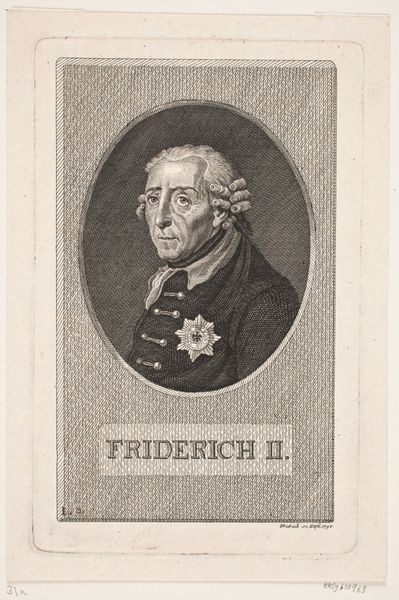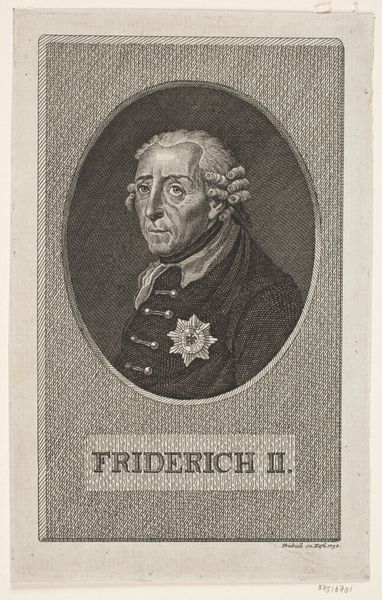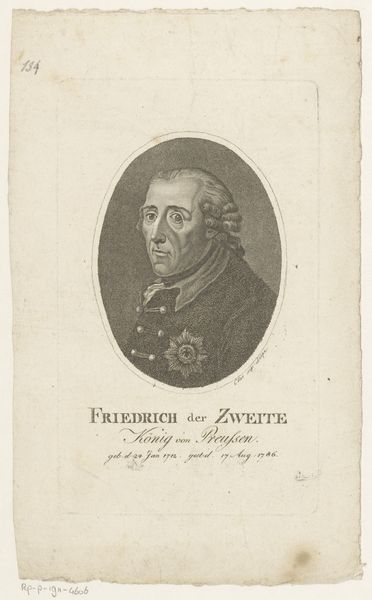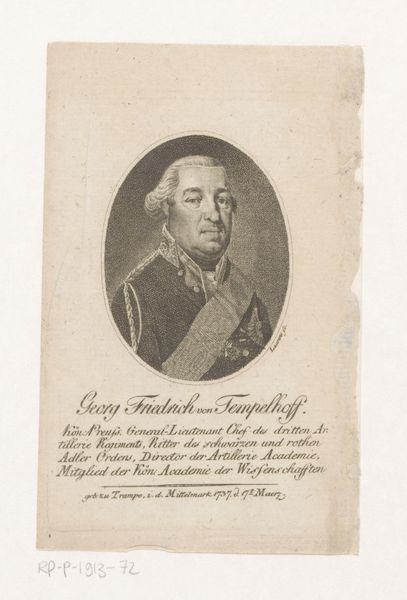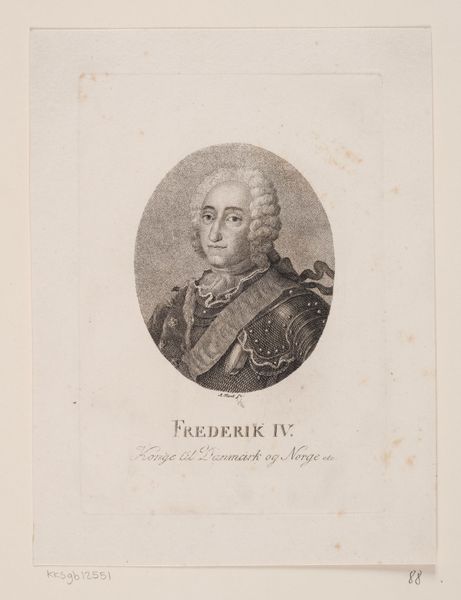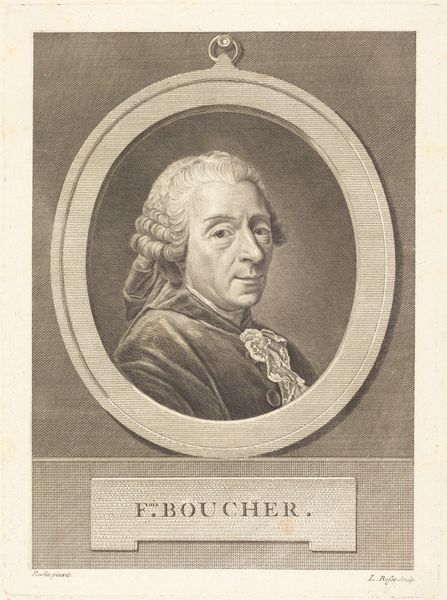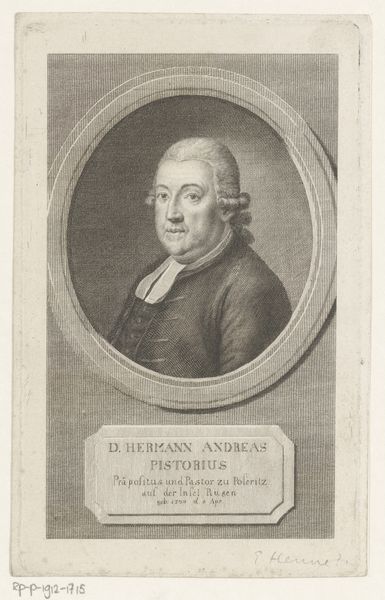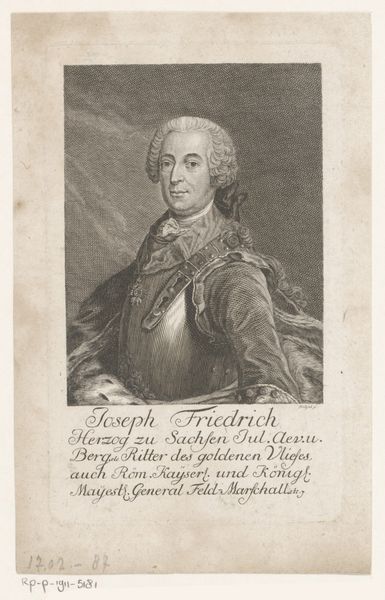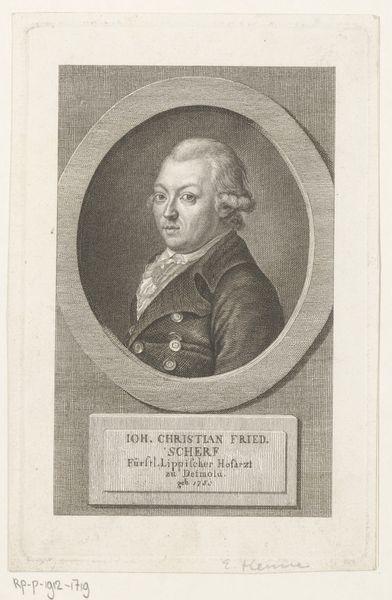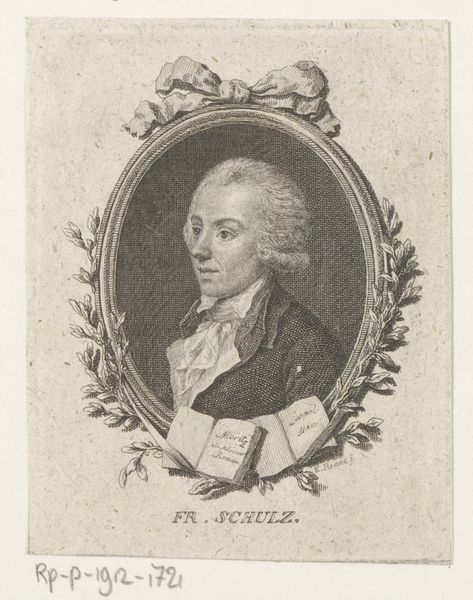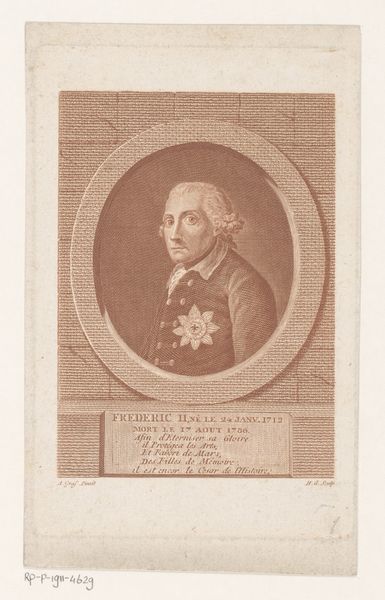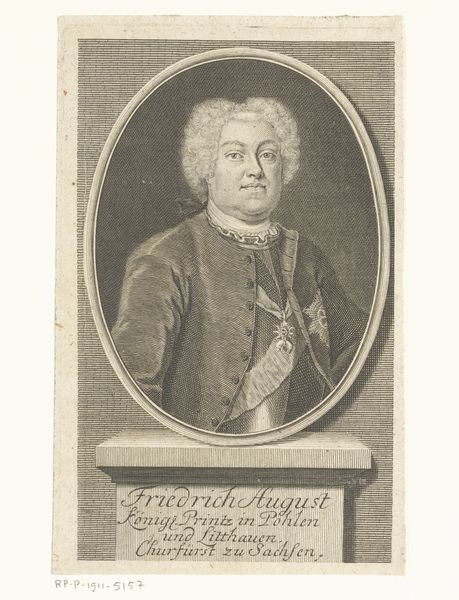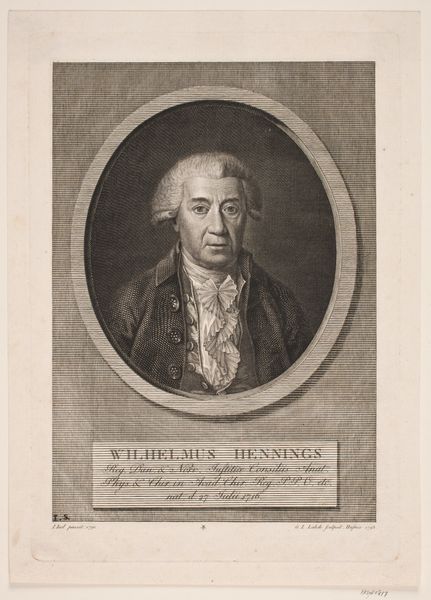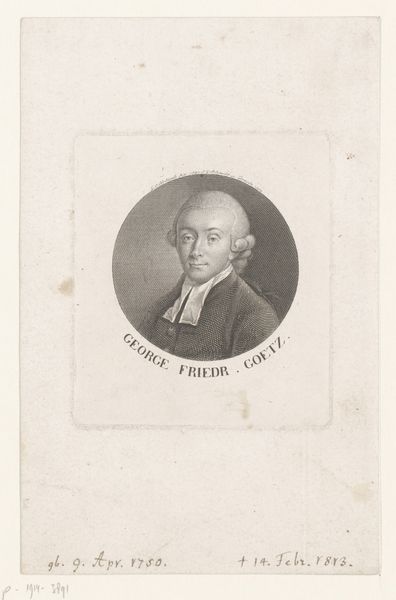
engraving
#
portrait
#
neoclacissism
#
old engraving style
#
history-painting
#
engraving
Dimensions: height 165 mm, width 102 mm
Copyright: Rijks Museum: Open Domain
Editor: Here we have an engraving from 1794 by Aegid Verhelst II, titled "Portret van Frederik II koning van Pruisen," or "Portrait of Frederick II, King of Prussia." It's rendered in a very formal, neoclassical style. What social narratives can we explore in this piece? Curator: This portrait, even in its neoclassical formality, allows us to investigate power, representation, and the construction of historical narratives. Consider the historical moment: 1794. The French Revolution is underway, challenging monarchical authority across Europe. Editor: So, how does this portrait of Frederick II respond to those revolutionary ideas? Curator: The engraving presents Frederick as a figure of stability and authority. His stern gaze, the military garb adorned with symbols of power…these elements reinforce his image as a strong, almost unshakeable leader. It's propaganda meant to legitimize his rule. Editor: A carefully crafted image, designed to project control during a period of upheaval. But does this idealised depiction erase the complexities and contradictions of Frederick’s actual reign? Curator: Precisely! How did his policies, for instance, impact different segments of Prussian society? Did everyone benefit from his rule, or were certain groups marginalized in the process? The engraving conveniently ignores these difficult questions. Consider also who this print was intended for; who consumed it, and what did they take away? Editor: This makes me rethink how we interpret these seemingly straightforward historical portraits. It’s not just about the individual, but the social and political messages being broadcast. Curator: Exactly. Art, especially portraiture of those in power, always exists within, and comments on, a larger power dynamic. Even in what may at first glance look traditional, we can find questions of agency, of inequality, of representation and its potential for exclusion. Hopefully this brief tour encourages that perspective moving forward.
Comments
No comments
Be the first to comment and join the conversation on the ultimate creative platform.
